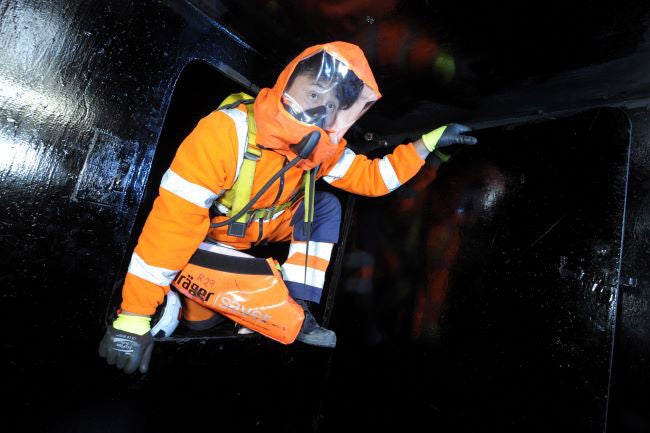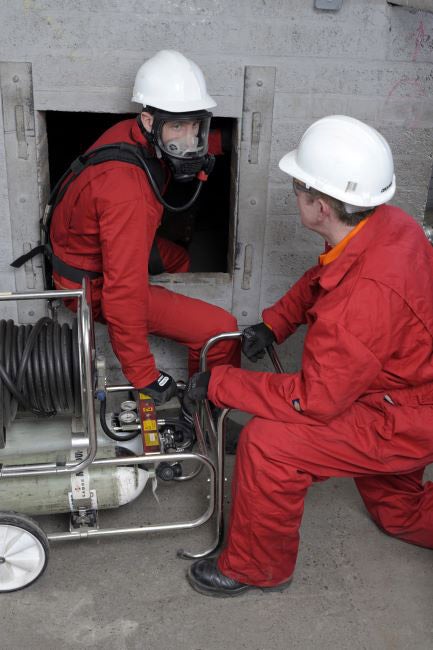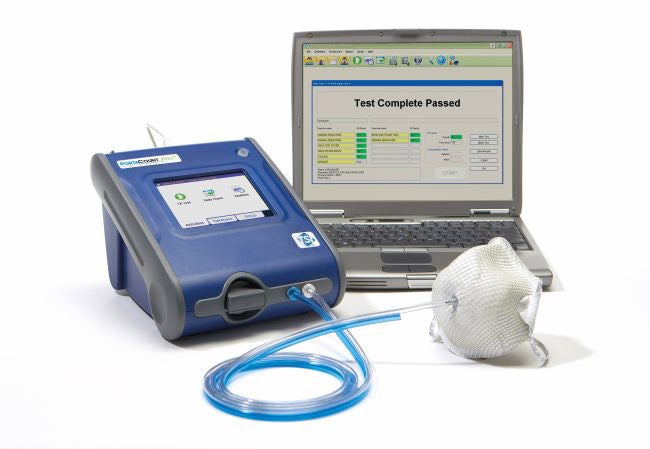Respiratory Protective Equipment (RPE) is used to provide protection to those who work in hazardous environments (such as a confined space) or with hazardous substances.
RPE provides a supply of air to the body and there are two broad categories of RPE:
- Respirators
- Breathing Apparatus
Types of respirators available:
- disposable half mask
- re-usable half mask
- full face mask
- fan-powered re-usable full face mask
- fan-powered respirator with re-usable hood, helmet or visor

Types of breathing apparatus available:
- unpowered fresh air hose with full face mask
- compressed airline with half mask
- compressed air breathing apparatus
- powered fresh air hose with full face mask
- compressed air breathing apparatus or powered fresh air hose with hood, helmet or visor
- self-contained breathing apparatus or compressed air breathing apparatus with a demand valve and full face mask
- self-contained rebreathers (oxygen)
All of the above types have their particular uses.
Further guidance on the correct selection of RPE can be found in the HSE’s publication ‘Respiratory Protective Equipment at Work - a practical guide (HSG53).’
For RPE to be effective, it must provide effective protection against hazards likely to be present / identified using a risk assessment.

RPE Fit Testing
Research has shown that almost half of the RPE in use does not provide the wearer with the anticipated level of protection required for the task to be carried out, simply because it does not fit the wearer correctly. It is pointless spending a considerable amount of money providing essential protection, identified by a detailed risk assessment, for your workforce only for it to be partially or even wholly ineffective due to a poor fit.
As people come in all sorts of shapes and sizes it is unlikely that one particular type or size of RPE face piece will fit everyone. Fit testing will ensure that the equipment selected is suitable for the wearer.
When to Face Fit Equipment
The best time to do fit testing is at the initial selection stage when individual users can be given a choice of adequate models of RPE. You should ensure that the make, model, type, and size of face piece that they wore when they had their successful fit test are made available for their use. If an employee wears more than one type of tight-fitting face piece, then each type of face piece should be fit tested.
How to Face Fit Equipment
RPE fit testing should be conducted by a competent person - you should take steps to ensure that person who carries out the fit test is appropriately trained, qualified and experienced, and is provided with appropriate information to undertake each particular task.
There are three main types of RPE fit testing methods available:-
- qualitative (taste test)
- quantitative (ambient particle count/Portacount)
- controlled negative pressure
And finally, never lose sight of the fact that PPE and RPE must be a last resort.
Control the risk first!

MRS Training & Rescue offers face fit testing, delivered by a team of qualified and highly experienced face fit testers. Under the COSHH Regulations, all employers must provide face fit testing for their employees, who are required to use Respiratory Protective Equipment. Face fit testing is a method for checking that a tight-fitting face piece matches the persons’ facial features and seals adequately to the wearer’s face.
At MRS Training & Rescue we utilise the quantitative method of fit testing to provide the highest level of protection and confidence to your employees.




